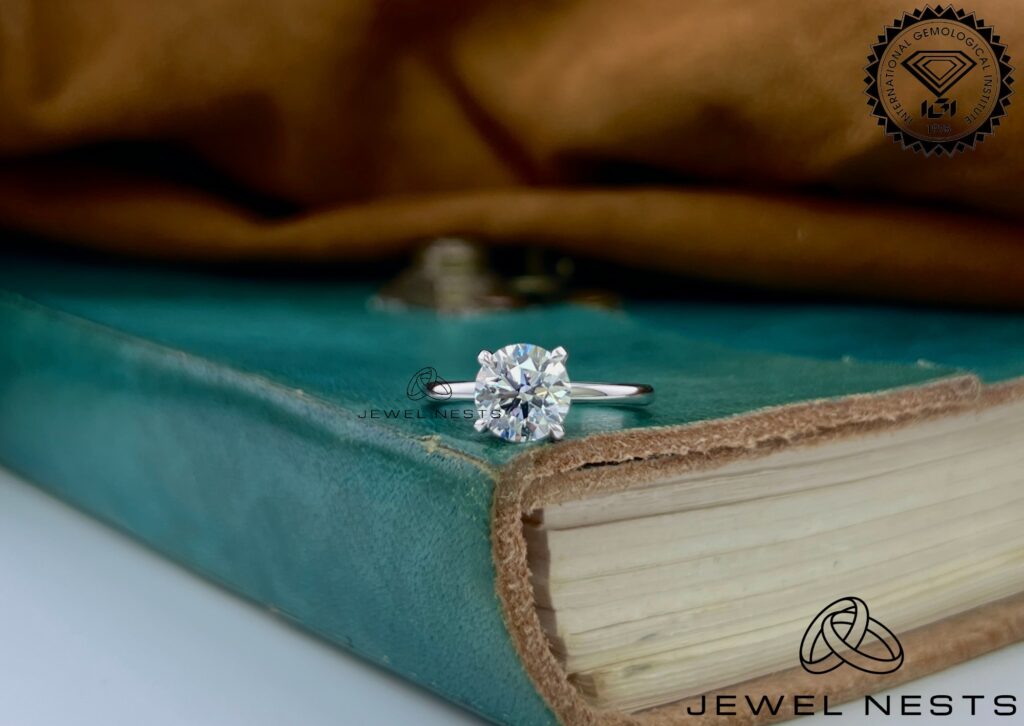Because all white gold is rhodium-plated. The rhodium is there to increase white gold’s lifespan and prevent it from scratching or tarnishing. This means what you really see when you look at a ring is rhodium, not the white gold itself. Underneath the rhodium, 14k white gold is a little whiter and more durable. 18k white gold has more of that rich, warm golden hue – but is a little softer. As we already said, though, there’s no visual difference once we plate either alloy.
| 14k | 18k |
| 14k has a cleaner white hue underneath the rhodium (58.3% pure gold) | 18k gold has a richer hue underneath the rhodium (75% pure gold) |
| 14k can be a little cheaper | 18k gold is more expensive |
| 14k gold is a little more nick and scratch-resistant | 18k gold is resistant to nicks, scratches, and oxidization |









